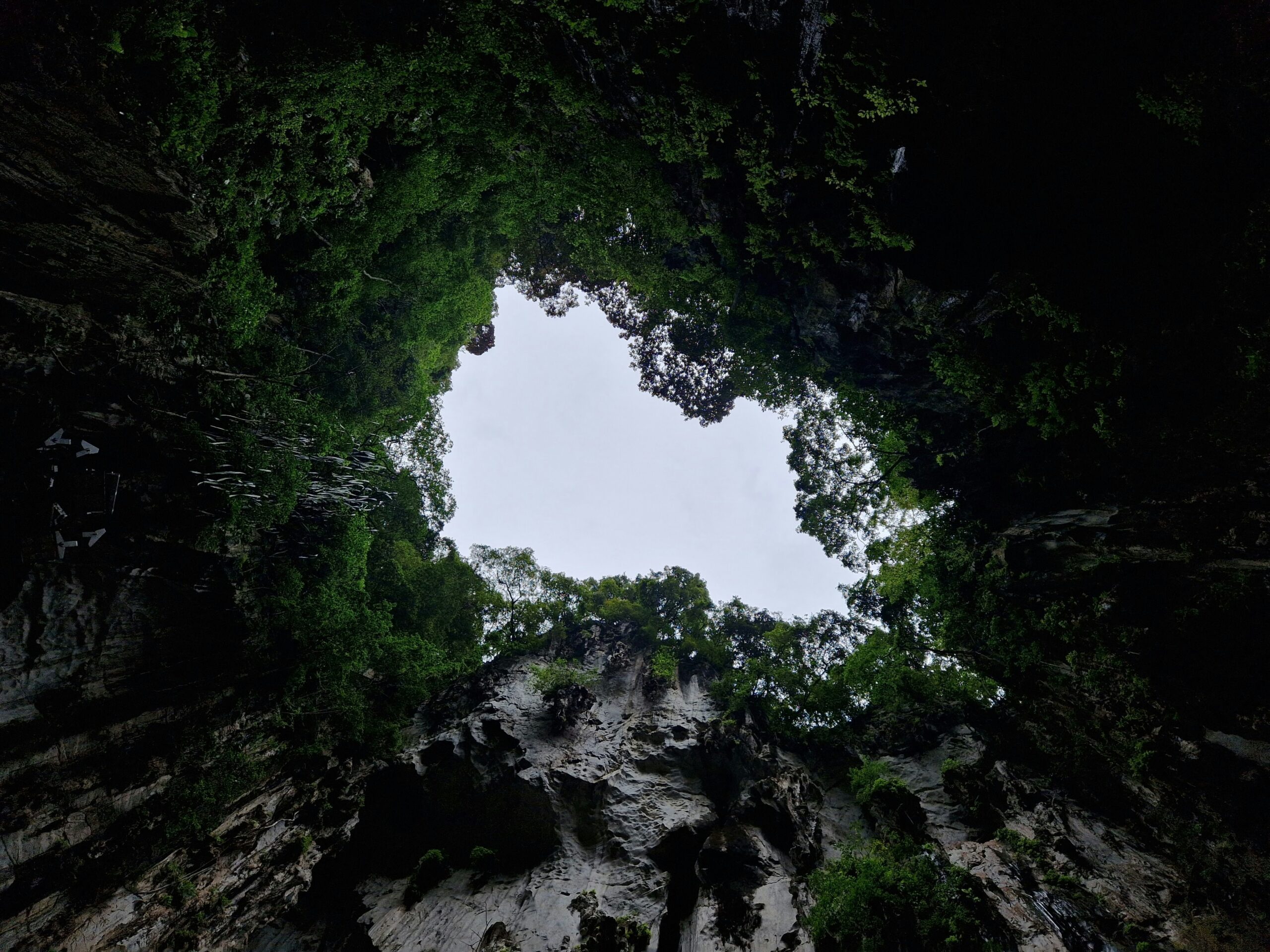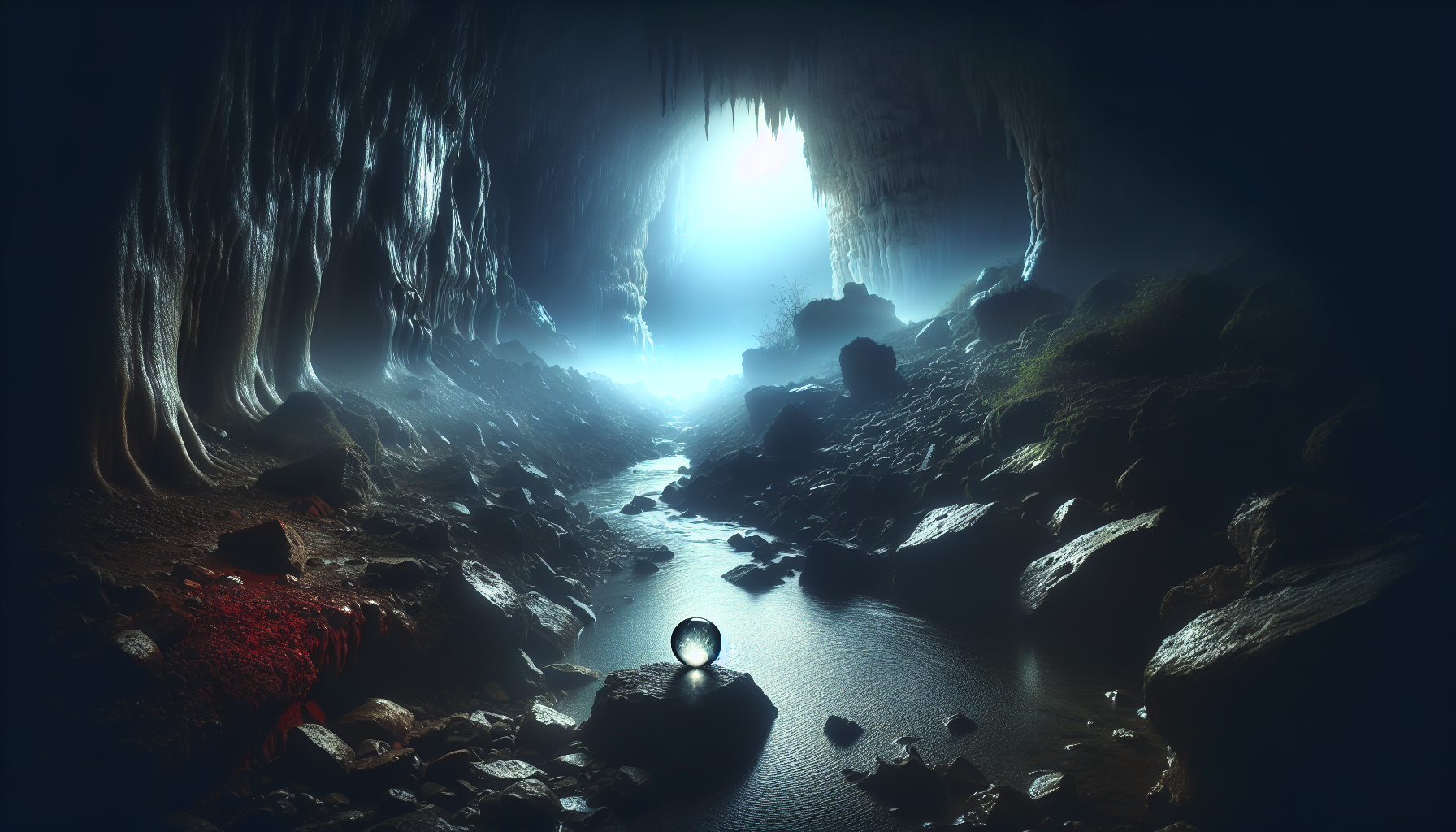Imagine being the explorer who uncovers the hidden wonders of secret caves or the mystifying depths of underground rivers. Picture the thrill of venturing into uncharted territory, your curiosity driving you to reveal the mysteries lying beneath the surface. In this article, we invite you to join us on a journey of exploration, as we seek to unearth these treasured secrets that wait to be discovered and shared with the world. Get ready to embark on an adventure like no other, where untouched wonders and hidden marvels await your insightful exploration.

Discovery of Secret Caves and Underground Rivers
Historical Accounts
Throughout history, there have been fascinating accounts of the discovery of secret caves and underground rivers. Many of these tales date back centuries and have captured the curiosity of explorers and adventurers. These accounts often speak of the allure and mystery surrounding these hidden natural wonders, drawing people into the depths of the earth in search of their hidden treasures.
Geological Formation
The formation of secret caves and underground rivers is a result of intricate geological processes that occur over thousands, if not millions, of years. These formations typically begin with the dissolution of soluble rocks such as limestone, gypsum, or dolomite by water. Over time, the continuous flow and erosion of water create intricate cave systems, shaped by unique geological features like stalactites, stalagmites, and underground chambers.
Remote Sensing Techniques
In recent years, the advent of remote sensing techniques has revolutionized the exploration of secret caves and underground rivers. Advances in technologies such as LiDAR (Light Detection and Ranging) and satellite imagery have allowed scientists and explorers to identify potential cave systems and subterranean networks. These non-invasive techniques provide invaluable insights into the vast, unseen world beneath our feet, guiding explorations and uncovering new wonders.
Exploring Underground Caves
Caving Equipment
Exploring underground caves requires specialized equipment to ensure safety and efficiency. Some essential caving gear includes helmets, headlamps, harnesses, and sturdy footwear. Additionally, ropes, carabiners, and rappelling equipment are often necessary for navigating challenging vertical passages. With the right tools at your disposal, you can venture into the depths with confidence and curiosity.
Safety Considerations
Safety is of utmost importance when exploring secret caves. Conditions underground can be unpredictable, with tight spaces, unstable rocks, and potential hazards such as falling debris. It is crucial to have proper training and knowledge of cave exploration techniques, as well as a reliable support team. Always inform someone of your whereabouts and have an emergency plan in place to ensure a safe and successful adventure.
Techniques for Cave Exploration
Cave exploration requires specialized techniques to navigate the unique challenges presented underground. Cavers often employ crawling, squeezing, and climbing techniques to navigate tight passages and vertical drops. Additionally, knowledge of rope work and rappelling is vital for exploring vertical cave systems. By utilizing these techniques and honing your skills, you can effectively traverse the intricate maze of underground caves.
Characteristics of Secret Caves
Inaccessible Locations
One of the defining characteristics of secret caves is their inaccessible locations. These hidden gems often reside in remote and unexplored regions, far removed from conventional tourist destinations. Whether nestled deep within dense jungles, hidden in icy glaciers, or concealed beneath desolate deserts, the allure of these inaccessible locations adds to the excitement and challenge of exploring secret caves.
Unique Cave Formations
Secret caves are often renowned for their unique cave formations, shaped over millions of years by the relentless forces of water and time. Stalactites, stalagmites, cave pearls, and draperies create breathtaking scenes that resemble otherworldly landscapes. The continuous deposition of minerals by dripping water builds these formations, resulting in a mesmerizing display of beauty and wonder.
Presence of Underground Fauna
Secret caves harbor a rich biodiversity, often housing unique ecosystems that exist exclusively in these underground realms. Adapted to the dark and sometimes extreme environments, these subterranean fauna represent a fascinating range of life forms. From translucent cave-dwelling fish to rare invertebrates, these creatures have adapted to survive in the absence of sunlight, offering invaluable insights into the resilience and adaptability of life on Earth.
Underground Rivers: Networks Below Earth’s Surface
Definition and Formation
Underground rivers are hidden waterways flowing beneath the Earth’s surface. Formed by the gradual erosion of rocks and sediments, these rivers represent an intricate network of interconnected watercourses that transport and shape the subterranean landscape. Over time, they can carve out expansive cave systems, sometimes even rivaling their terrestrial counterparts in size and grandeur.
Significance in Hydrology
Underground rivers play a crucial role in hydrology, influencing the distribution and availability of freshwater resources. Acting as conduits for groundwater, these hidden rivers regulate water flow and contribute to the replenishment of aquifers. They also serve as integral components of complex underground water systems, influencing the overall hydrological balance of the surrounding areas.
Examples of Well-Known Underground Rivers
Some of the most well-known underground rivers captivate explorers and researchers alike. The Sistema Sac Actun in Mexico’s Yucatan Peninsula is one such example, boasting over 347 kilometers (215 miles) of explored passages. The Sistema Ox Bel Ha cave system also in Mexico holds the record for the world’s largest underwater cave, spanning an astonishing 270 kilometers (167.8 miles). These remarkable examples highlight the vast and awe-inspiring nature of underground rivers.

Challenges and Risks in Exploring Secret Caves
Limited Accessibility
The inherent allure of secret caves often lies in their limited accessibility, which presents a significant challenge for explorers. Inaccessibility can arise from various factors, including difficult terrain, dense vegetation, or extreme weather conditions. These barriers require meticulous planning, physical stamina, and a resilient spirit to overcome, making the exploration of secret caves a true test of dedication and perseverance.
Unpredictable Conditions
Venturing into secret caves comes with inherent risks due to the unpredictable conditions encountered underground. Cavers must contend with potential hazards such as flooding, cave-ins, low visibility, and oxygen deprivation. Furthermore, navigating through unfamiliar territory in the absence of natural light adds an extra layer of complexity and requires careful navigation and orientation skills to minimize risks and ensure safe exploration.
Environmental Threats
Exploring secret caves also brings to light the often delicate and vulnerable ecosystems existing within. Human activity can have a profound impact on these underground environments, leading to irreversible damage. By unintentionally introducing pollutants, altering delicate microclimates, or disrupting fragile food webs, explorers must exercise utmost caution and adhere to strict conservation protocols to minimize their ecological footprint and protect these hidden treasures.
Scientific Value and Exploration Benefits
Geological Discoveries
Exploring secret caves unveils a wealth of geological discoveries that contribute to our understanding of the Earth’s history. These hidden underground realms preserve geological evidence in the form of sediment layers, mineral deposits, and fossils. By studying these formations, scientists can decipher climatic changes, tectonic activity, and past ecological conditions, providing invaluable insights into the ongoing processes shaping our planet.
Ecological Insights
Secret caves house unique ecosystems that offer remarkable ecological insights. The organisms adapted to these subterranean environments often possess extraordinary physiological and behavioral adaptations. By studying these species and their interactions, scientists gain knowledge about the limits of life on Earth and the potential for discovering new adaptations and evolutionary pathways. Such insights can aid in conservation efforts and the preservation of biodiversity.
Cultural and Historical Significance
Many secret caves and underground rivers hold immense cultural and historical significance. They often served as shelters for ancient civilizations, providing valuable archaeological insights into human history. Cave paintings, artifacts, and remnants of past civilizations unlock the secrets of our ancestors and shed light on their way of life. Exploring these hidden realms allows us to connect with our past and preserve our cultural heritage.

Prominent Secret Cave and Underground River Systems
Mammoth Cave System, USA
One of the most well-known secret caves in the world is the Mammoth Cave System in Kentucky, USA. With over 651 kilometers (405 miles) of explored passages, it is the longest known cave system globally. Its intricate network of chambers, passages, and breathtaking formations has captivated explorers and visitors for centuries, offering a glimpse into the mesmerizing world beneath the surface.
Son Doong Cave, Vietnam
Son Doong Cave, located in central Vietnam, is renowned as the largest cave chamber in the world. Discovered in 1991, it stretches over 5 kilometers in length, with ceilings reaching up to 200 meters (656 feet) high. The cave boasts an otherworldly beauty, featuring its own jungle, river, and unique formations. The exploration of Son Doong Cave has captivated the imagination of adventurers and photographers alike, showcasing the captivating beauty hidden deep within the Earth.
Cenote Dos Ojos, Mexico
A cenote is a natural sinkhole formed by the collapse of limestone, often providing access to underground rivers. Cenote Dos Ojos in Mexico’s Yucatan Peninsula is a prime example, known for its crystal-clear waters and stunning visibility. Its underwater passages connect to a vast network of subterranean waterways, enticing divers with its unique ecosystem, awe-inspiring cave formations, and ethereal beauty.
Waitomo Glowworm Caves, New Zealand
Located on New Zealand’s North Island, the Waitomo Glowworm Caves offer a mesmerizing spectacle. These caves are famous for their unique luminescent inhabitants – thousands of glowworms that light up the underground chambers with their bioluminescent glow. Visitors can take boat tours through the cave system, gazing up at the starry night-like ceiling created by these beautiful creatures. The Waitomo Glowworm Caves exemplify the breathtaking diversity and wonder found within secret caves.
Exploration Techniques and Tools
Underwater Cave Diving
Underwater cave diving is a specialized form of exploration that requires advanced training and equipment. Divers equipped with scuba or closed-circuit rebreather systems can navigate submerged cave systems and reach remarkable depths. Through this method, explorers can penetrate the hidden secrets of underwater caves, uncovering unseen wonders and contributing to our understanding of these enigmatic environments.
LIDAR Mapping
LiDAR (Light Detection and Ranging) mapping has become an invaluable tool for exploring secret caves and underground river systems. By emitting laser beams and measuring the reflected light, LiDAR generates highly accurate three-dimensional maps of cave passages and topographic features. This technology allows for detailed analysis and visualization of complex cave systems, aiding in navigation and identification of potential areas of interest.
Remote Operated Vehicles (ROVs)
In recent years, the use of remote-operated vehicles (ROVs) has advanced exploration capabilities in secret caves. These unmanned devices can navigate and document challenging cave environments, providing visual data and insights without putting human divers at risk. Equipped with high-resolution cameras and robotic arms, ROVs have revolutionized our ability to explore and understand even the most inaccessible cave systems.

Conservation and Preservation Efforts
Balancing Exploration and Protection
Balancing the exploration of secret caves with their long-term protection and conservation is crucial. It is essential to strike a delicate balance between satisfying the desire for knowledge and discovery while ensuring the preservation of these fragile ecosystems. By implementing regulations, educating explorers, and implementing responsible exploration practices, we can mitigate the potential negative impacts and safeguard these unique environments for future generations.
Importance of Cave Conservation
Cave conservation is essential to preserve the delicate balance of underground ecosystems and ensure the long-term survival of unique species. These subterranean environments, often characterized by slow and fragile ecological processes, are highly susceptible to disturbances caused by human activities. By raising awareness and implementing conservation measures, we can safeguard these hidden wonders and contribute to the preservation of Earth’s biodiversity.
Legal Frameworks for Cave Protection
Many countries have recognized the importance of cave systems and have established legal frameworks to protect and conserve them. National parks and protected areas often encompass secret caves, ensuring their preservation and limiting human impacts. Additionally, international conservation organizations collaborate with governments to identify and protect significant cave systems, working towards the sustainable management of these invaluable natural resources.
The Future of Cave Exploration
Advancements in Technology
The future of cave exploration holds immense potential, fueled by advancements in technology. As LiDAR mapping, ROV capabilities, and underwater cave diving equipment continue to evolve, explorers will gain even greater access to uncharted cave regions. High-resolution imaging techniques and virtual reality technology may also enable individuals to experience the beauty and wonder of secret caves from the comfort of their homes, inspiring new generations of explorers.
Exploration Projects and Expeditions
Exploration projects and expeditions focused on secret caves and underground river systems will continue to push the boundaries of discovery. These ambitious endeavors bring together scientists, researchers, explorers, and local communities to unravel the mysteries hidden beneath the Earth’s surface. From mapping unexplored cave systems to studying the unique flora and fauna residing within, these projects will expand our knowledge and ignite our collective curiosity.
Potential Discoveries Yet to Come
Countless secret caves remain unexplored and undiscovered, holding untold wonders and potential scientific breakthroughs. The thrill of the unknown awaits those who dare to venture into the depths, where new geological formations, species, and archaeological treasures lie in wait. With each exploration, we uncover fragments of knowledge, enriching our understanding of the Earth’s past, present, and future.
In conclusion, secret caves and underground rivers continue to entice explorers with their mysterious allure. From the historical accounts of past adventurers to the technological advancements propelling modern exploration, these hidden realms captivate the imagination and offer invaluable scientific and cultural insights. As conservation efforts and responsible exploration continue to grow, the future holds endless possibilities for uncovering the secrets that lie beneath the Earth’s surface and expanding our understanding of the world around us. So, are you ready to embark on your own journey of discovery into the depths of these secret caves and underground rivers? The choice is yours, and the wonders that await are beyond imagination.

